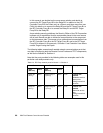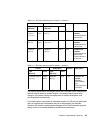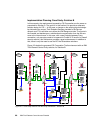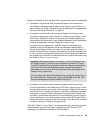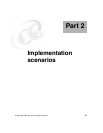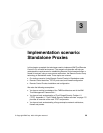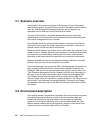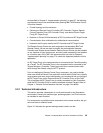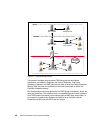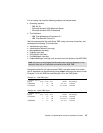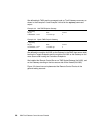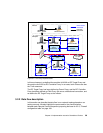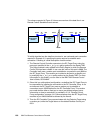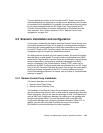94 IBM Tivoli Remote Control Across Firewalls
3.1 Scenario overview
In this section, we provide an overview of our Remote Control in Standalone
mode testing scenario. A typical Remote Control in Standalone mode is defined
when the Tivoli Management Gateway (Gateway) and its Endpoints are
separated from the Remote Control Controller by a firewall.
The goal of this scenario is to provide detailed information to the System
Administrators of the requirements and considerations that will help them work
with session management across a firewall.
Since firewalls restrict the communication channel, we will show how Remote
Control can work through the firewall, respecting its restrictions, and how the
Remote Control Proxies are used for this purpose.
We have included tables of information on ports that need to be configured in the
firewall in order to establish Remote Control sessions, as well as pictures related
to the scenario we are describing, outlining the flow of data, and a detailed
description of the steps required to make such an environment work properly.
Wherever possible, we point out the differences between UNIX and non-UNIX
platforms, trying to cover as many situations as possible.
In this testing scenario, we assume the IBM Tivoli Management Framework has
been properly installed and that the communication between Endpoints and
Gateways, TMR server, and managed nodes work as well. You can refer to the
Tivoli Enterprise Management Across Firewalls
, SG24-5510 for information on
this area. This is the basic requirement before configuring and installing IBM
Tivoli Remote Control across firewalls. We also assume that the IBM Tivoli
Remote Control 3.8 server component is already installed on the TMR server as
well as on all Tivoli Gateways hosting the Endpoints, Controllers, and Targets.
For additional information, refer to the
IBM Tivoli Remote Control User’s Guide
,
SC23-4842.
3.2 Environment description
In our testing scenario, the goal was to reproduce the most common environment
using all the required components in order to provide valuable inputs and
illustrate our conclusions. We used different machine types and operating
systems. Even though the goal here is not to test firewall products, we used
different firewall products with this configuration, keeping in mind the services,
protocol, and ports used by the Remote Control Proxies.



